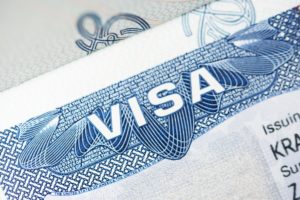Living and working in the US is easier than you may think

It’s no secret that the United States provides incredible opportunities for citizens and immigrants alike. The challenge for those who are not citizens is finding a way to legally enter the United States to take advantage of the opportunities that are available. In truth, there are many ways to legally live and work in the United States, but the challenge is knowing where those legal pathways exist and how to successfully pursue them. In this article, our desire is to present you with one such legal pathway that may be applicable to your situation and afford you the opportunity to immigrate to the United States.
L-1A Visa: Temporary Visa for Intra-Company Transfers
If you work for a company that is affiliated with a US Company, whether it’s a parent company, branch office, affiliate, or subsidiary, then you may have the opportunity to obtain an L-1A Visa and legally enter the United States for many years. The L-1A Visa is specifically designed for companies to transfer employees, who work in a managerial or executive role, to the United States for a period of up to 7 years. There are some very specific requirements to determine eligibility for this type of visa which can be worked out with a qualified immigration attorney, but the L-1A Visa provides a wide open door for an unlimited number of qualified individuals to legally immigrate to the United States.
There are several very important advantages to the L-1A that make it an appealing option for immigration to the United States. First, the L-1A Visa is typically approved for an initial period of 3 years. Even after the initial approval, it can be extended in two-year increments up to a maximum of 7 years. This provides an excellent, long-term opportunity to benefit from working in the United States. Additionally, once you are approved for the L-1A Visa and working in the United States, you will become eligible to apply for a green card without having to satisfy the labor certification requirement. One final advantage that we will mention here is that some family members can legally accompany the L-1A Visa holder by obtaining an L-2 Visa. Not only will the L-2 Visa enable the family member to accompany the L-1A to the United States, but it will also allow the Spouse to obtain work authorization while living in the United States.
The global nature of business today creates the perfect opportunity for managers and executives to pursue legal immigration to the United States. If your employer has an office located in the United States, you may be able to legally secure an opportunity to live and work in the United States. However, the L-1A application process can be complex and it is a good idea to always engage an attorney to help you achieve your goals.
You can read more information about the L-1A Visa program here: https://abeeraminlaw.com/practice-areas/employment-based/l-1-visa/
The author of this Article is an immigration attorney who practices US immigration law with offices in both New York and New Jersey. You can reach her at immigration@abeeraminlaw.com or (877) 960-0424, (212) 366-1077






